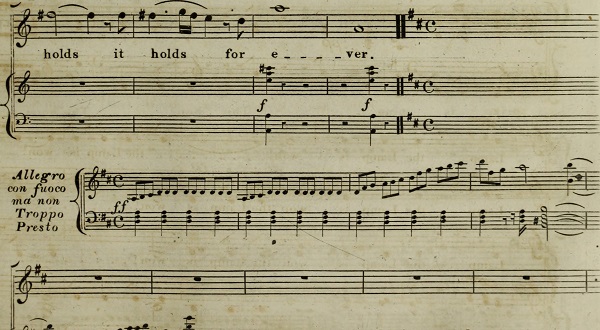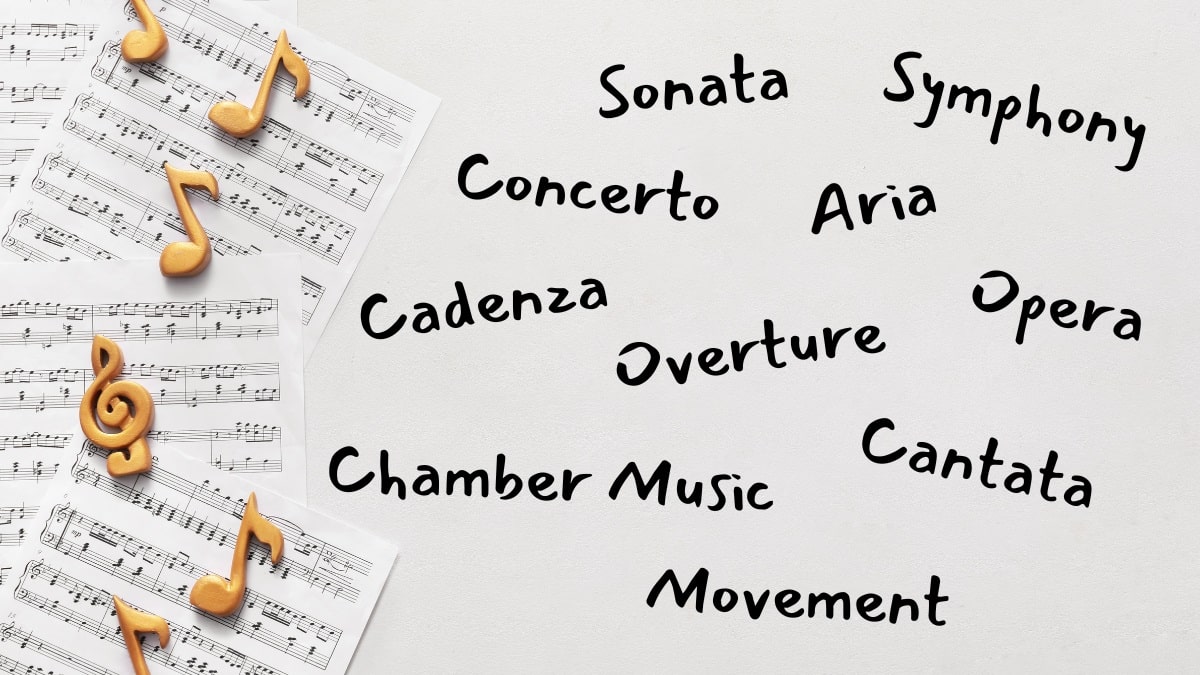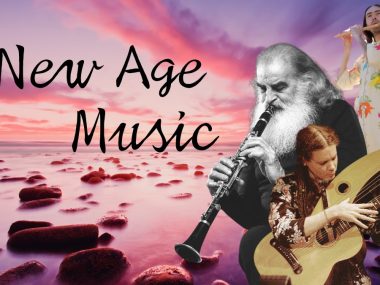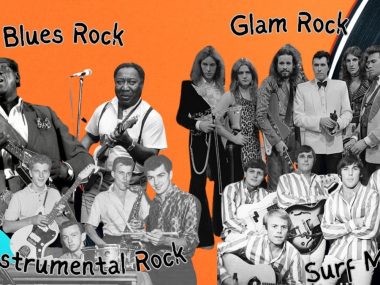The world’s most famous composers led pretty interesting lives. Tchaikovsky and Saint Saens used to imitate ballet dancers, and Rossini wrote his most famous composition, Di Tanti Palpiti, while waiting for a risotto meal at a restaurant.
Beethoven made every cup of coffee using precisely 60 coffee beans, which he counted himself! And the best one yet: Edward Grieg wouldn’t play in concerts before rubbing the frog figurine that he kept in his pocket.
Aside from their bizarre habits, these composers laid the foundation of the music as we know it today. To celebrate their achievements, here’s a list of the most famous types of musical compositions.
Sonata
Well, if you studied Mozart or Beethoven in high school, you probably know what a sonata is. It’s a type of musical composition played by a single instrument, either solo or in a small ensemble. And it’s sometimes played by two instruments – mostly a piano accompanied by a cello or a violin.
Sonatas usually consist of two or four movements. Each movement has a different musical character, but it’s in a related key.
Over the years, the concept of sonatas evolved from one form to another, reaching its optimum in the Classical era. Since then, it’s been varying depending on the time.
In the early 19th century, sonatas had evolved to be a staple of large-scale works. Composers applied it to many Instrumental genres, and it’s quickly become a fundamental method of interpreting concert music.
The first hint of sonatas’ development in the Classical period is most obvious in Mozart’s No. 38 symphony – particularly in the first movement.
Aria
The aria is the lead singer’s best chance to show off their vocal skills. It’s a self-contained music piece, performed by only one voice. It may be accompanied by orchestral or Instrumental music, but the lead characters usually prefer to go without.
An aria is more than often a part of something bigger. It’s meant to enhance the overall performance, but one of its aims is giving the lead singer the chance to get applause amid the opera havoc.
All opera hits you’re familiar with are probably arias. The most famous ones are La donna è mobile by Verdi’s Rigoletto and Der Hölle Rache by Mozart.
The audience usually goes into continuous applause after arias, impressed by the high notes that arias are generally all about.
Concerto
A concerto is a musical composition for a soloist and an orchestra together. The solo instrument is either a violin, cello, or piano, accompanied by a whole team of orchestral musicians. In my opinion, a concerto is the most spectacular form of musical composition.
You get the chance to hear the soloist and the orchestra independently and together at the same moment. A concerto is harmonical yet disentangled in a good way.
The soloist’s melody stands against the dramatic orchestral performance, and you can’t help but let both sides play subtly into your ears, drinking in both separate performers at once in a harmonious symphonic piece.
All symphony concerts present a concerto, featuring the team’s most glamorous musician as the soloist. Some of the most well-known and influential concertos in history include:
- Florence Price‘s Violin Concerto No.2.
- Béla Bartók’s Concerto for Orchestra.
- Beethoven’s Piano Concerto No. 5 in E flat
- Aaron Copland’s Clarinet Concerto.
- Haydn’s Trumpet Concerto in E flat.
- Mozart’s Horn Concerto No. 4 in E flat.
- Shostakovich’s Cello Concerto No.1 in E flat.
- Rodrigo’s Classical guitar Concierto de Aranjuez.
- Vivaldi’s Mandolin Concerto in C.
Cadenza

A cadenza is an aria for a musician. Instead of showing off vocal skills, the musicians show off their orchestral and instrumental skills in a solo play amid the concert.
It’s usually included after one or two movements. The orchestra abruptly stops playing, and the chosen soloist starts playing.
At the end of the soloist’s piece, the conductor gets the orchestra to join once again, ending the movement in a graceful act of harmony.
Cadenzas are now written before the concert. However, back in the day, composers were able to improvise full pieces on the spot. So, most cadenzas were unplanned.
Opera
If you haven’t heard of operas before, there’s a very high chance you’ve been living under a rock for most of your life. Operas are dramatic plots featured in a theatre, accompanied by extravagant costumes, lavish theatre sets, and full classical orchestras.
There’s been controversy regarding opera as a musical composition, while many people thought it’s instead an art form that’s supported by a musical performance. That’s not the case, though. That’s more of an accurate description for musical theatres, not opera.
In operas, the musical piece and the voice dictate the casting, making it more of a narrative genre. The musical works are composed as a whole, rather than separate pieces sung in scattered movements. One of the best examples of opera compositions is The Marriage of Figaro by Mozart.
Chamber Music
Chamber music is a composition featured by a small or medium group of musicians on different instruments. The group usually comprises three or four instrumentalists, but some larger groups can go up to eight participants. Each musician plays a different instrument.
The musicians play without a conductor; they entirely depend on their harmonious act. The only extra person required in a chamber is a page-turner, and that’s if a pianist is among the team.
Chamber music is called that because it was meant to be played at homes and small chambers, giving a more intimate experience than the opera arenas. Now, it’s mostly played in summer festivals.
A lot of musicians prefer chamber music to the regular recital gigs and concertos because it gives a sense of freedom. Although the music is pre-planned, the lack of a conductor gives the musicians a chance to show off their individual skills in one symphonic performance.
Rock bands are the most modern example of chamber music, although the composition was meant for Classical music. The members are usually friends, and they do everything together. In a way, this accounts for better performances because the audience loves a united group.
Overture

An overture is a musical composition that’s meant to introduce a musical work, and it’s considered an independent instrumental work on its own.
In the early days, operas were opened with a short instrumental piece. One of the best examples of this is the Toccata, the opening of L’Orfeo by Claudio Monteverdi.
Earlier than that, in the 17th century, the overture was meant to signal the attendees to their seats. It was like the cue for them to get ready for the main event, the opera. You can think of it as the appetizer of music events.
A fun fact about overtures is that they were mostly written after the opera, although they’re the starting act. That’s because the composers wanted to include some themes from the opera. Mozart took that a step too far, though.
Once he was writing an overture to Don Giovanni, he delivered it to the musicians when the ink wasn’t dry yet. He took the last-minute working to a whole other level!
After that, overtures developed to become independent. They were composed and written on their own and later incorporated into concerts and operas.
Symphony
A symphony may be the most loosely understood musical term. People nowadays call anything musical a symphony. However, it’s a musical composition of four movements in the form of a full orchestra, and it almost always includes a sonata in-between.
The full orchestra consists of a large ensemble of percussion, brass, wind, and string players. That’s how symphonies started in the Classical Era, between 1740 and 1820. After that, further into the 19th century, symphonies became longer, and the movements became more unified.
That was the approach of most composers in that era, otherwise called the Romantic Period.
There are other terms associated with the word symphony, such as ‘Philharmonic.’ The word is used to describe multiple groups in one city. Meanwhile, the word ‘Orchestra’ refers to the musical players performing the symphony.
The most famous symphony of all time is undoubtedly Beethoven’s No.3. It’s believed that this symphony changed how music is perceived.
Cantata

Cantata is a musical composition that’s sung rather than played. Still, it’s accompanied by musical instruments, and it consists of multiple movements. It’s more of a vocal composition than a musical one.
The term cantata is famous thanks to J.S Bach. Back in his day, he called his works ode or motetto, but the term changed to cantata in the 19th century. Cantatas usually involve a choir, and they’re now considered any musical piece performed by a solo singer, a group, and an orchestra.
Movement
You’ve come across the word ‘movement’ a lot in this article, so it’s only fair to learn what it is. A movement is a self-contained music piece of a musical composition. Any performance of a complete musical work requires movements to be performed in a sequence.
Despite that, movements are sometimes performed independently, but they were originally played to be a part of something bigger.
All composers break their pieces into movements, and the best examples of that are symphonies and sonatas. A music movement usually starts fast, slows down, and ends on a fast note again.
There’s a break after each movement, and it’s meant for the players to re-tune their musical instruments.
Types of Musical Compositions: Conclusion
Musical compositions can be categorized into various genres, including Symphony, Concerto, Sonata, Fugue, and Opera.
- Symphonies are large-scale orchestral works with multiple movements, often following a specific structure.
- Concertos feature a solo instrument or group of instruments with an orchestral accompaniment.
- Sonatas are typically for a solo instrument, such as piano or violin, with multiple movements.
- Fugues are complex, contrapuntal compositions built around a recurring melodic theme.
- Operas are dramatic, large-scale works that combine music, singing, and theatrical elements.
These diverse musical forms showcase the creativity and complexity of the art of composition, allowing composers to express a wide range of emotions and ideas.







